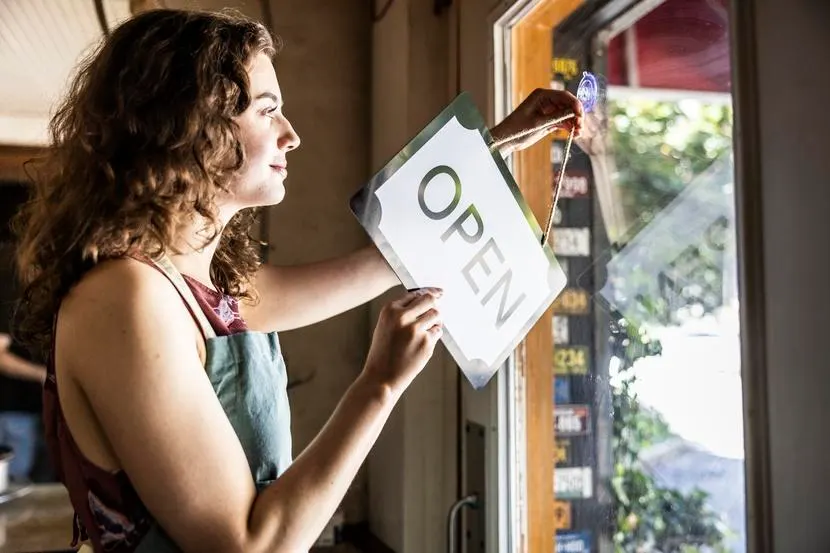Copyright Forbes

Sabine Leveiller is the Marketing Vice President, of Europe at VistaPrint. She has over 20 years of experience in marketing strategy. If the spate of recent reports is anything to go by, it would be hard not to conclude that the future of the U.K.’s high street remains uncertain. According to Simply Business, nearly 133,000 high street shops could disappear over the next 15 years, largely due to rising rents, international competition undercutting prices and spiraling operating costs. But all is not lost. Consumers still champion the idea of a buzzing high street as the beating heart of their town or city, a place where they can convene, interact and grab most of their everyday needs. A survey of 2,000 U.K. adults in August, conducted by my company and Enterprise Nation, suggests there is plenty of reason for optimism. Even as the bigger players retreat, the high street is full of new opportunities for small businesses to thrive. The Enduring Appeal Of The High Street It’s no surprise we’re beginning to see signs of a turnaround: Shopping on the high street is about far more than convenience. High streets have long been community hubs, particularly in smaller towns. As of 2019, according to the Independent, 4 in 5 people enjoy chatting with staff while shopping in person—a simple pleasure online shopping can’t replicate, however convenient it may be. People are also remarkably committed to supporting small businesses, which they often see as the backbone of the local economy, perhaps even more so when times get tough. My company’s survey found that the majority of Brits (85%) would like to see more independent businesses open, saying they create jobs, liven up the community and improve the look and feel of town centers. But the data also revealed an interesting generational divide. While just 1 in 4 over-55s feel proud of their local high street, pride jumps to 68% among 25- to 34-year-olds. This younger group is also the most frequent visitors, with many heading to their high street almost daily. Many say their local high street feels busier now than it did a year ago, a promising sign that we may be on the cusp of a longer-term revival. How Small Businesses Can Rise To The Challenge Optimism aside, small businesses looking to thrive on the high street must still adapt to shifting consumer behavior against a challenging economic backdrop. Embrace technology and adopt a hybrid approach. We live in a highly digital world and, as much as people love the face-to-face connections of the high street, they spend a great deal of time online—particularly on social media. Over a quarter (26%) of respondents said they first heard about a new local shop through social media. Social commerce, where the entire purchase journey happens within platforms like Instagram, Facebook or TikTok, is expected to account for 17% of global e-commerce transactions by the end of 2025. This makes maintaining a strong online presence vital for success, and diversifying revenue streams can help offset some of the costs of running a physical shop. It’s also important not to overlook the role of technology in the physical space. Customers expect businesses to be tech-enabled, allowing them to use contactless payments and click-and-collect services, making the purchasing transaction easy and simple. Moving these services online can also help make life easier for the business owner. Integrated point-of-sale systems can help track sales and stock levels. While analytics tools can reveal patterns in customer behavior, and automation can handle repetitive tasks, this makes it easier to understand customer demand and stock products accordingly. Far from being intimidating, technology can be a small business’s secret weapon. Get smart with marketing. Almost two-thirds (61%) of respondents said marketing campaigns influence whether they visit a shop, and footfall alone won’t keep the lights on. Marketing is often seen as costly, but it doesn’t have to be. Simple tactics—like a printed QR code at checkout, encouraging reviews or a striking new shop sign—can be both affordable and effective. Other local businesses can also be your biggest advocates, and collaborating with other local shops along your high street can also strengthen the sense of community that customers are seeking. Build relationships that last. Seeing a friendly face and building personal connections are key drivers to encouraging more people to shop locally. Businesses that contribute to the local community by hosting events and supporting local causes are valued by the communities they serve. In a climate where competition is fierce, finding and retaining business is crucial to a physical store’s success. You need repeat customers who come to rely on your goods and services and can recommend you to their friends and family. Introducing loyalty programs or referral incentives is one easy way to nurture those connections. Small-business owners are also in the unique position of being able to gather direct feedback, act on it and even create personalized experiences and then reward repeat customers. Often it’s the small, thoughtful touches that keep people coming back. A New Chapter For The High Street Early signs of a high street revival are promising. It’s by no means a foregone conclusion; however, there are significant opportunities for small businesses and independent services to explore the benefits a physical store may bring to their local community. Those willing to invest and innovate, engage with their community and integrate both physical and digital strategies can not only sustain their business but also help them thrive.



